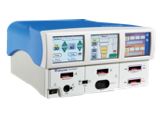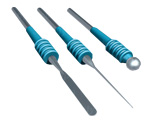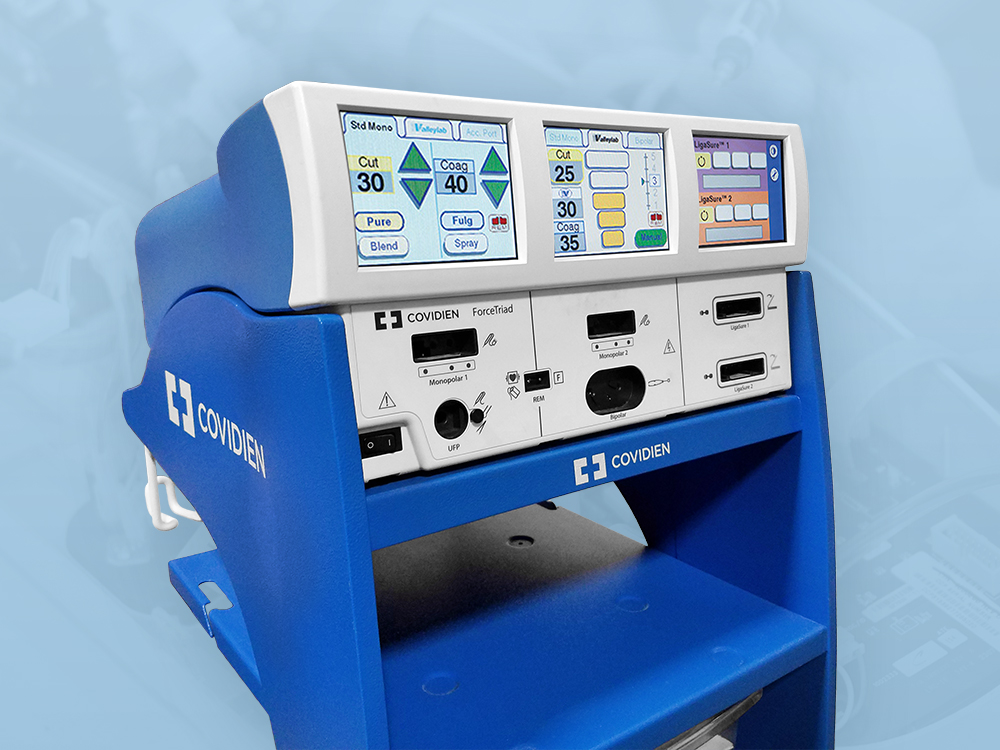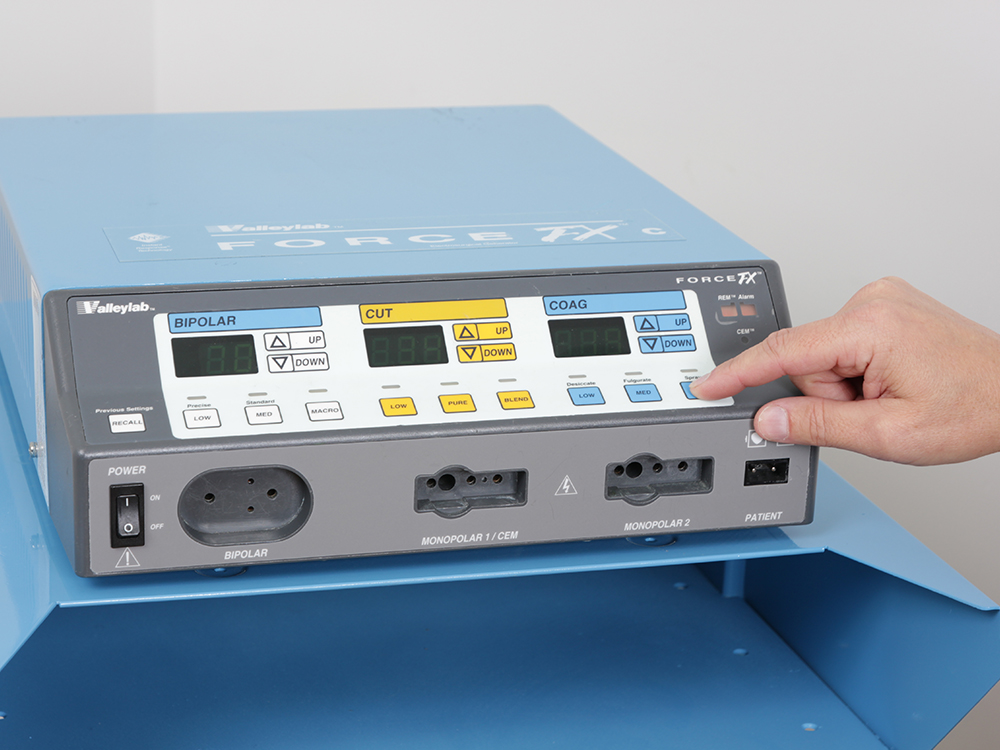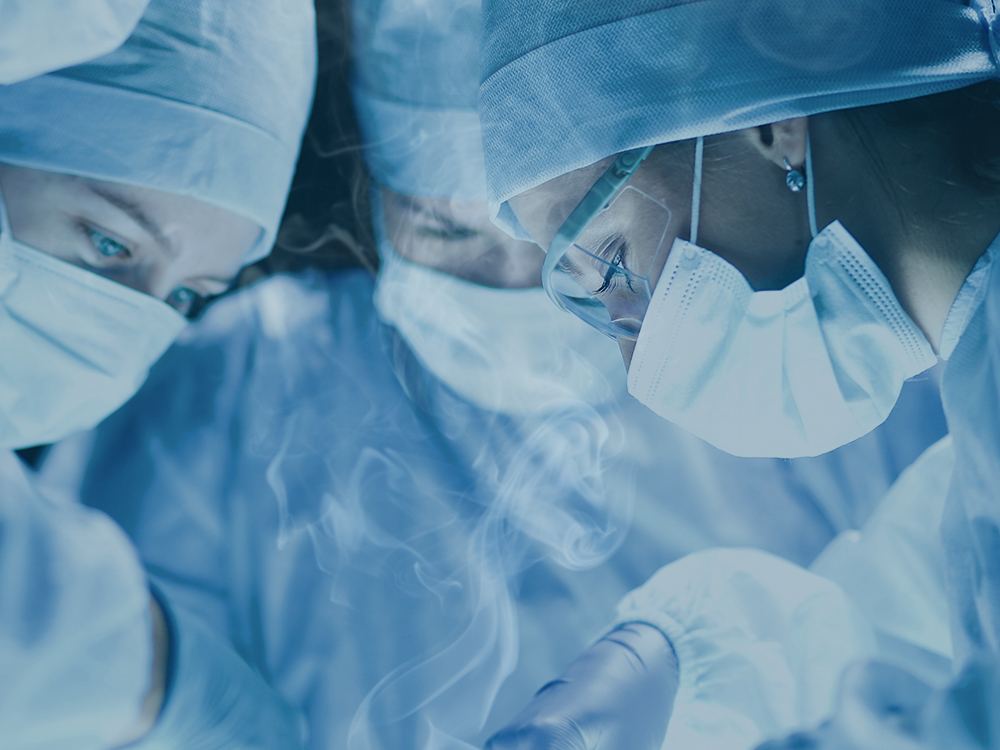Tips for Managing Surgical Smoke in Your Operating Room
October 22, 2018

The electrosurgical unit is a ubiquitous feature of today’s operating room. An ESU can provide a number of benefits during surgical interventions, including decreased blood loss and increased precision. However, electrosurgical units can be unsafe for practitioners and patients if proper precautions aren’t taken to reduce surgical smoke in the OR suite.
Read this guide to learn more about surgical smoke, and the see latest recommendations for mitigating its harmful effects in your facility.
Surgical Smoke is a Known Hazard
Any time an ESU is used, the cutting and cauterization processes produce a plume commonly referred to as surgical smoke. Analyses of surgical smoke show that 95 percent of the smoke is merely water vapor, which isn’t harmful to patients and staff. The remaining five percent can contain toxic gas and known carcinogens, vapors and particulates, cellular material, viruses, and bacteria. While five percent might not seem consequential, studies have shown that these toxins are often carried by the water vapor in surgical smoke, allowing them to disperse widely in the operating suite.
The short term effects of surgical smoke include respiratory irritation, eye irritation, dizziness and headaches, nausea, and skin irritation — which are typical symptoms experienced with any kind of smoke exposure. Unlike other workplace smoke hazards, the National Institute for Occupational Safety and Health reports that surgical smoke might expose staff to harmful viruses during specific procedures, including HPV and HIV.
The long term effects of habitual exposure to surgical smoke are still being studied, but recent findings compare the dangers of surgical smoke to those associated with tobacco smoke. In a 2012 article from the Journal of Plastic, Reconstructive, and Aesthetic Surgery, researchers found the total daily surgical smoke production in the average operating room in the United Kingdom was equal to approximately 27 to 30 unfiltered cigarettes.
How to Manage Surgical Smoke in Your Operating Room
To mitigate surgical smoke in the operating room, regulatory agencies including the Association of periOperative Registered Nurses, have adopted multi-pronged strategies that include personal protection, local exhaust ventilation, and specialized smoke evacuation technology.
High-Filtration Masks
During electrosurgical procedures that produce surgical smoke, it is recommended that staff wear high-filtration masks. These masks typically guard against particulate matter larger than 0.1 microns, offering staff additional protection for anything missed by local exhaust ventilation or a smoke evacuator.
Local Exhaust Ventilation
Local exhaust ventilation systems can either be portable units, or a built-in function of an operating room. An LEV should be used in conjunction with a smoke evacuation system, and should always be engaged when a surgical smoke plume is being produced.
Smoke Evacuator
Unlike an LEV, a smoke evacuation system is specialized to vacuum up surgical smoke near the surgical site. In their 2012 Perioperative Standards and Recommended Practices, the AORN recommends following the NIOSH smoke evacuator guidelines. The NIOSH states the smoke evacuator wand should be placed at a maximum of two inches from the source of the surgical smoke plume. This helps to trap the majority of the smoke before it disperses.
Smoke evacuators typically feature a multi-stage filtration process to remove toxins and particulate matter from surgical smoke. For example, the Bovie Smokeshark II offers facilities four-part filtration, as outlined below:
- Step One: Large particles and liquids are removed.
- Step Two: Particulate matter and microorganisms as small as 0.1 - 0.2 microns are removed with Ultra Low Penetration Air filtration.
- Step Three: Activated charcoal absorbs toxic gases and helps to remove odor.
- Step Four: Expanded foam traps the activated carbon and prevents it from exiting the filter.
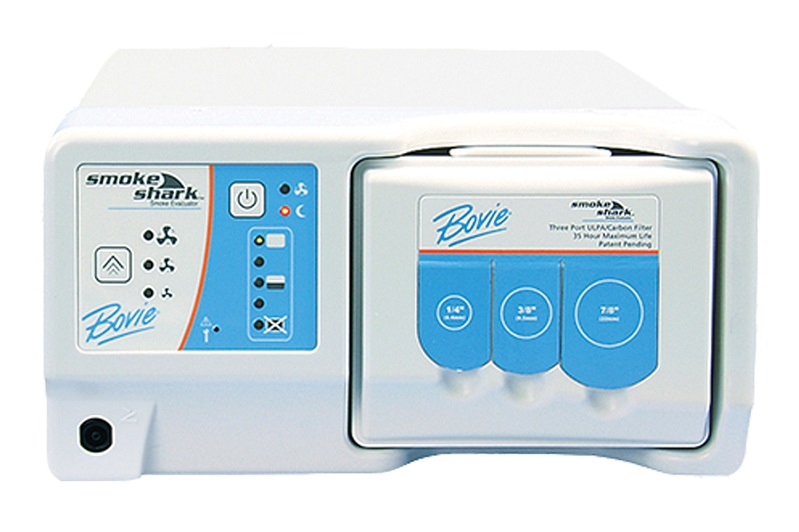
The Bovie Smokeshark II also features three different operational speeds, allowing staff to customize the unit’s filtration for each surgical application.
Additional Precautions
Once LEV and smoke evacuation protocols are in place at your facility, it’s important to clean or replace and dispose of smoke evacuator filters, hoses, and other parts. Disposable elements should be treated as potentially infectious waste and staff should adhere to the standard handling procedures.
